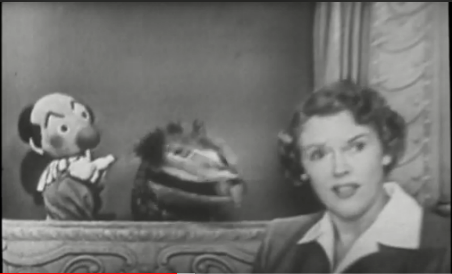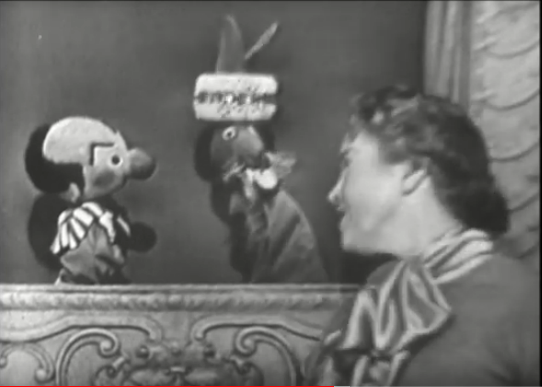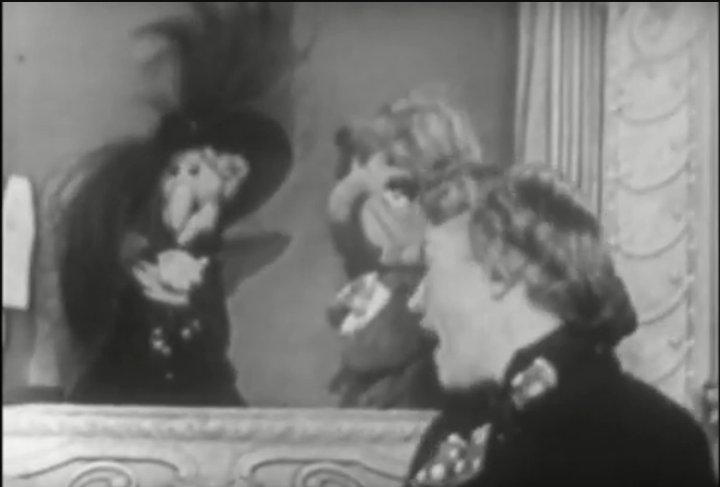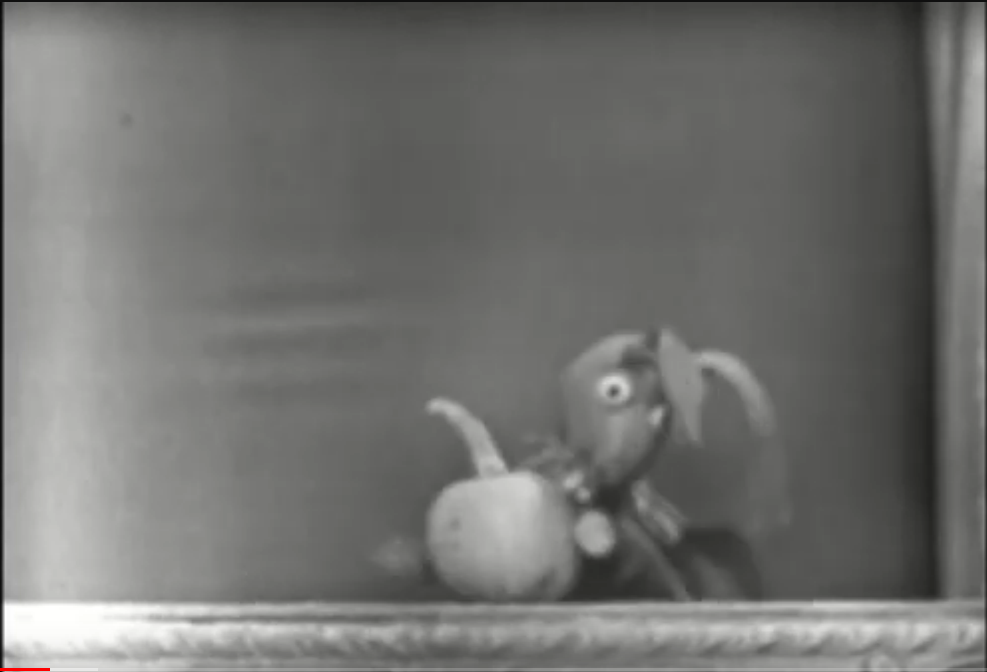What I watched: The seventh episode of the second season of The Lone Ranger, a kid-friendly Western created by George Trendle and starring Clayton Moore as the titular hero and Jay Silverheels as Tonto. “Drink of Water” was written by Joseph F. Poland, directed by John H. Morse, and featured guest stars Bill Kennedy, Arthur Stone, and Gregg Barton. “Drink of Water” aired on Thursday, October 26, 1950 on ABC at 7:30 pm., and is available on YouTube.
What happened: The Ranger and Toto are wandering through a particularly desolate stretch of country. They’re running out of water, and the watering holes have all gone dry. The vegetation in the area seems very healthy, though. In town, a few men are having an argument, with one man believing that his father did a date to bring on the rain. They’re interrupted by Phinaeus Stacey (Kennedy), who claims he has a scientific way to bring on the rain. He takes them to a wagon full of all kinds of science-y equipment. Stacey tells them it’ll cost them $5000 from the village, but he won’t take the payment until the rain starts.
Shockingly, this guy is not on the up-and-up. He meets with a couple of goons, and it becomes clear that his plan is to have the town gather their money and then steal it from the safe. Meanwhile, the Ranger and Tonto find a young boy with his leg stuck under a rock. When they take him to his parents, his father Jim (Barton) holds a gun at them, afraid they’re going to take his water. His wife manages to talk him down. It turns out the kid, Jackie (Stone), has been growing up on stories of the Lone Ranger, although Jim still thinks he’s a mythological figure.

Jackie tells them about Mr. Stacey the rainmaker. The guy from the town visits saying that they need Jim to pitch in. Stacey plays at being reluctant to strong-arm them, but Jim agrees to donate their savings of $500. The Ranger is suspicious and holds Stacey at gunpoint but isn’t able to get anything out of him. The money is put in the safe, and everyone leaves town to watch the explosions that are supposed to bring rain.
The bad guys decide to kidnap Jackie when he starts asking too many questions. When they find one of the Ranger’s silver bullets in his pocket, they realize that it’s the real deal. Tonto eavesdrops and runs away, but Stacey notices and lets him go to create a trap for the Ranger. It works, and all three get locked in a cabin with burning explosives, but Silver is able to rescue them by pulling out the bars of the window, thus representing the first time the very special horse has played a meaningful role in the plot. They get out just as the cabin blows up, of course.
The Ranger interrupts the robbery. This leads to a brief shoot-out, with the two goons subdued. Stacey is seemingly arrested off-screen, and Jackie’s parents look on beatifically as the Ranger ride off. Thunder sounds in the sky, meaning that these people aren’t all going to starve after all. Hooray!
What I thought: This episode of The Lone Ranger opens with a surprisingly real and mundane problem: there isn’t enough rain for the farms in the surrounding area. Western shows, especially kids’ Westerns, typically envision owning a ranch or farm as a grand adventure where you get to hang out with horses all day, but in real life the West was often a brutal and precarious place to make a living. It’s not really a problem that the Lone Ranger can solve, but droughts could be life-ruining. The end of the episode promises the arrival of rain, but agriculture is an unpredictable business.
Fortunately, there’s a human villain that the Lone Ranger can punch in the face. The “rainmaker” Stacey is not as memorable as past inventor characters, including last episode’s clock guy, but the straightforward nature of the performance is kind of an asset as well. You could almost see yourself trusting this guy, like the genial narrator of so many 1950s educational films.
One of the thing that helps Stacey’s believability is that rainmaking, or cloud seeding, was considered the forefront of technology in the 1950s. Major companies believed that they could manipulate the weather by bombarding clouds, and had some success with early experiments. Kurt Vonnegut’s brother Bernard was one of the scientists working on it, at General Electric. Of course, this technology was never fully adopted, but various countries have continued to attempt it well into the 21rst century.

The other interesting aspect of this episode is the dynamic between the Lone Ranger, Jim, and young Jackie. Jim basically thinks of the Lone Ranger as a man in a Santa costume, performing a fictitious role for his son, and in a sense he’s right. Clayton Moore is, after all, playing a role that predates him. It doesn’t quite fit with past episodes, where the Lone Ranger is known as a very real person in the West, but maybe this town is a real backwater.
There’s an obvious way in which Jackie is an audience surrogate, meant to let kids imagine themselves making friends with the Lone Ranger. In that case, perhaps Jim is also a surrogate for the imagined parental figure that allows their child to sit down and watch The Lone Ranger after dinner. This may all be cheap and corny, the show suggests, but isn’t it nice to let your kids believe in something?
Coming up next: Two of radio’s biggest stars come to TV with The George Burns and Gracie Allen Show.



















